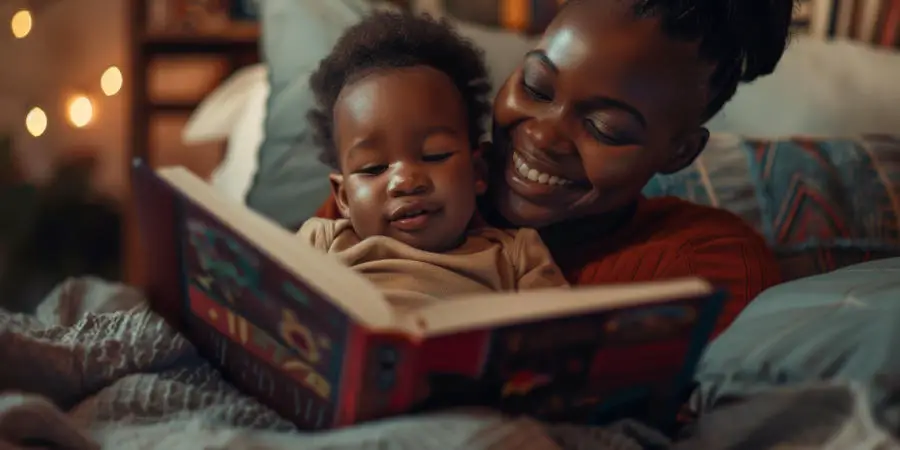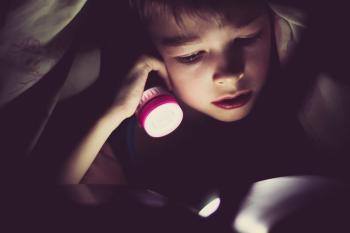15-Minute Bedtime Routine: Personalized Books That Help Kids Sleep

Let me paint you a picture: It’s 8 PM, and you’re staring at the clock wondering how bedtime somehow became a two-hour production. Your little one is bouncing off the walls, asking for water, needing the bathroom, and basically doing everything except sleeping. Meanwhile, you’re mentally calculating how many hours of sleep you’ll get if they fall asleep… now.
I’ve been there. We’ve all been there. But here’s what I’ve learned after talking to countless parents and sleep specialists: the problem isn’t that kids don’t want to sleep. It’s that we haven’t given them the right tools to transition from awake-and-wired to calm-and-ready-for-dreams.
Enter the game-changer: a 15-minute bedtime routine centered around personalized books. This isn’t just another bedtime hack – it’s a scientifically-backed approach that actually works.
Why 15 Minutes Is the Magic Number
First, let’s talk about why 15 minutes specifically. Research shows that consistent bedtime routines improve sleep quality in children, but here’s the kicker – the routine doesn’t need to be long to be effective. In fact, shorter routines are often more successful because they’re easier to stick with consistently.
A 15-minute routine is long enough to help your child’s brain make the transition from day mode to sleep mode, but short enough that you won’t feel overwhelmed trying to maintain it every single night. It’s also the perfect amount of time for reading one or two books without overstimulating your child right before sleep.
The key is consistency, not duration. Studies have shown that establishment of a consistent bedtime routine improves sleep outcomes in young children, and a routine you can stick to every night is infinitely more valuable than an elaborate one you abandon after a week.
The Power of Personalized Books at Bedtime
Now, let’s talk about why personalized books are absolute magic for bedtime routines. When your child sees themselves as the main character in a bedtime story, something powerful happens. They don’t just read about going to sleep – they experience it.
Traditional bedtime books are wonderful, but personalized books take it to another level. When little Emma sees “Emma” in the story brushing her teeth, putting on pajamas, and settling into bed, it becomes a roadmap for her own bedtime routine. She’s not just reading about someone else’s bedtime – she’s rehearsing her own.
Personalized bedtime stories help children fall asleep after a busy day of adventuring, and they’re specifically designed to be short enough not to overstimulate while still being engaging enough to hold attention.
The 15-Minute Framework
Here’s your blueprint for a bedtime routine that actually works:
Minutes 1-5: Transition and Setup
- Dim the lights in your child’s room
- Help them into pajamas if not already done
- Quick bathroom trip
- Get settled in bed with their comfort items
Minutes 5-12: Personalized Story Time
- Read one personalized bedtime book
- Keep your voice calm and soothing
- Allow for minimal interaction (pointing, quiet comments)
Minutes 12-15: Wind Down
- Brief cuddle or back rub
- Say your regular goodnight phrase
- Final drink of water if needed
- Lights out
The beauty of this framework is its flexibility. Some nights you might spend an extra minute on cuddles, other nights you might read slightly faster. The total time can vary by a few minutes, but the structure stays the same.
Types of Personalized Books That Work Best
Not all personalized books are created equal when it comes to bedtime. Here’s what to look for:
Bedtime Routine Books
These are the gold standard for sleep-focused reading. The best personalized bedtime books blend gentle life lessons with illustrations that help children become the hero who conquers bedtime. Look for books that walk through familiar bedtime activities with your child as the main character.
Books like “Time for Sleep” personalized editions work particularly well because they include rhythmic verses of all the things we need to do before we go to bed at night. The rhythm is naturally soothing, and seeing themselves in the routine helps children understand what’s expected.
Gentle Adventure Books
Choose personalized adventure books that end with the character (your child) safely at home and ready for bed. These satisfy the need for story while still directing toward sleep. The key is ensuring the adventure concludes peacefully rather than ending on a cliffhanger that might cause excitement.
Emotion and Comfort Books
Books that help children process the day’s emotions while featuring them as the main character can be incredibly soothing. These might address common bedtime worries like being afraid of the dark or missing parents during the night.
What Makes a Personalized Book “Sleep-Friendly”
When choosing personalized books for bedtime, look for these specific features:
Calming Language: The text should use peaceful, gentle words. Avoid books with exciting action words or overly stimulating language, even if they’re personalized.
Soothing Illustrations: Pictures should be soft, cozy, and calming. Bright, busy illustrations can be overstimulating right before sleep.
Familiar Settings: Books that feature bedrooms, homes, or other familiar, safe spaces work better than exotic or unfamiliar locations.
Predictable Outcomes: The story should have a clear, peaceful resolution. Avoid books that end with questions or leave things unresolved.
Appropriate Length: For bedtime, shorter is better. Look for books that can be read comfortably in 5-7 minutes.
Creating Your Own Personalized Bedtime Stories
If you can’t find the perfect personalized book, you can create your own personalized bedtime stories. Here’s a simple template:
“Once upon a time, there was a little [boy/girl] named [child’s name] who lived in a cozy house on [your street name]. Every night, [child’s name] would [describe their actual bedtime routine].
First, [child’s name] would brush their teeth with their [color] toothbrush. Then they would put on their favorite [describe their pajamas].
[Child’s name] would climb into their comfortable bed and pull up their soft blanket. They would think about all the fun things they did that day, like [mention something specific from their day].
As [child’s name] closed their eyes, they felt safe and happy, knowing that tomorrow would bring new adventures. Soon, [child’s name] was fast asleep, dreaming wonderful dreams.”
This template can be adapted and changed regularly while maintaining the comforting structure.
Troubleshooting Common Issues
“My child wants to keep reading more books” This is where the 15-minute boundary becomes crucial. Explain that bedtime stories have a special time limit, and stick to it. You might say, “We have time for one special story about you, and then it’s time for dreams.”
“The personalized book gets them too excited” Some children initially get very excited seeing themselves in books. This usually settles down after a few readings. If it persists, try reading the book earlier in the evening a few times before making it part of the bedtime routine.
“They want the same book every night” This is actually great! Repetition is comforting for children and helps strengthen the bedtime association. You can have 2-3 personalized bedtime books and rotate them weekly if you want variety.
“They ask too many questions during the story” At bedtime, it’s okay to limit interaction more than you would during daytime reading. You might say, “Let’s just listen to the story tonight, and we can talk about it tomorrow.”
The Science Behind Why This Works
There’s solid research backing up why this approach is so effective. The right bedtime books can make sleep training easier by serving as effective tools, and personalized books take this a step further.
When children see themselves in stories, it activates different parts of their brain than when they’re just observing other characters. They’re not just passive listeners – they’re mentally rehearsing the behaviors they see “themselves” doing in the book.
The routine aspect is equally important. Children’s brains crave predictability, especially when transitioning between states like awake and asleep. A consistent 15-minute routine signals to their nervous system that it’s time to start winding down.
Making It Work for Different Ages
Ages 2-3: Focus on very simple personalized books with basic bedtime activities. Keep interaction minimal and your voice very soft and calm.
Ages 4-5: You can introduce slightly more complex personalized stories, but still keep them gentle and sleep-focused. This age group often enjoys books that address common bedtime concerns.
Ages 6-7: Older children can handle personalized books with slightly more plot, but bedtime is still not the time for exciting adventures. Focus on stories that help them process their day or prepare for tomorrow.
Building the Habit
The first week is crucial for establishing this routine. Here are some tips for success:
Start on a weekend: This gives you a few days to work out the kinks without worrying about early morning schedules.
Involve your child in choosing: Let them help select which personalized book to read, or even help create one together.
Be patient with yourself: Some nights will go better than others, especially initially. The key is consistency over perfection.
Track your success: Keep a simple chart of how long it takes your child to fall asleep after the routine. You’ll likely see improvement within a week or two.
What to Do When It’s Not Working
If after two weeks you’re not seeing improvement, consider these adjustments:
Earlier start time: Your child might be overtired by the time you start the routine. Try beginning 15-30 minutes earlier.
Environment changes: Make sure the room is cool, dark, and quiet. Even small environmental factors can impact success.
Different book choices: The personalized book might be too stimulating or not quite right for your child. Try a different style or topic.
Shorter routine: Some children do better with a 10-minute routine, especially initially.
The Long-Term Benefits
Parents who stick with this approach often report benefits that extend far beyond easier bedtimes:
- Children develop positive associations with reading
- Bedtime becomes a special bonding time rather than a battle
- Kids learn to self-soothe and transition to sleep independently
- The whole family experiences less stress around bedtime
- Children’s overall sleep quality improves
Books that help children build bedtime routines create opportunities for real-life connection and comfort, and the personalized element makes this connection even stronger.
Expanding the Concept
Once your 15-minute routine is established, you can expand the concept:
Weekend variations: On weekends, you might read two personalized books or spend extra time on the wind-down portion.
Travel adaptations: Bring a few personalized books when traveling to maintain routine consistency.
Seasonal updates: Some personalized book services allow you to update details seasonally, keeping the stories fresh while maintaining familiarity.
Making It Sustainable for Parents
Let’s be real – you’re the one who has to maintain this routine, so it needs to work for you too:
Prepare in advance: Have the book ready and the room set up before you start the routine.
Take turns with partners: If you have a partner, alternate nights to prevent caregiver burnout.
Keep it simple: Don’t feel pressure to make every night perfect. Simple consistency beats elaborate inconsistency.
Enjoy the process: This is quality time with your child. Try to be present and enjoy these moments – they’ll be grown before you know it.
Related Posts:
- Creating a Sleep-Friendly Bedroom Environment for Toddlers
- Dealing with Bedtime Resistance: Gentle Strategies That Work
Sources:






